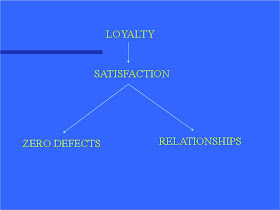Many organizations use five or six pillars to represent the supporting structure of their organization resting on top of a firm foundation. Those pillars may include Service * Quality * Finance * Growth and a combination of other supporting principles, but will almost always include the People Pillar. In an article today in Wharton at Work titled People First, Strategy Second a book by Ram Charan called The Talent Masters (Crown Business, 2010) is highlighted. In the book, he highlights the importance of investing in people and identifying those with growth potential. The best companies in the world have learned that it is best to recruit from within. Senior leaders are heavily involved in recruitment at all levels, new talent is observed for in the ranks, judgements on leaders are based upon hard evidence and cross-checking by observations by multiple people, leader development is as aggressive as delivering financial results.
I have heard all my life that the church is not a building, it is the people that go to gather in the building. Many organizations forget the their very organization is made up of the people that work there.
I have always said that the patient is my first priority, the second is the people that care for the patients.
This guiding principle has helped me through many decisions. The first time you say that to a group of employees, they don't like it. They want first place. But when you explain that no one would work the night shift if the patient was not in first position, it begins to make sense. It has been equal for me to the Ritz-Carlton's "We are Ladies and Gentlemen serving Ladies and Gentlemen." It does say to me how I think employees should be treated. I think they should be treated the way I woud want to be treated. They are a valuable resource. They should be carefully selected. My friend and author Tom Hornsby wrote in his book New Roles for Leaders that leaders should H.O.G. (Help Others Grow). I have been repayed many times over for spending extra time with people to help them learn something new.
The balance of course is accountability. People have to be accountable for their actions. The more clear we make our expectations, the easier it is to hold people accountable. If an individual understands their role and chooses not to perform their job, they should expect that they would be held accountable for that. If they are dishonest, they should expect to be be held accountable for that. Remember, I have talked about 2/3 team members and low performers. Leaders don't have to be drill sergeants, they have to be coaches and scorekeepers. If you have tried to coach someone and they cannot do the job, it becomes a matter of self selecting off of the team.
Source
You owe it to your other employees to hold those not pulling their weight accountable. Remember, the chances are, lower performers will bring other employee's performance down to their level.
IDENTIFYING HIDDEN TALENT IN THE RANKS
So how do we identify those hidden talents out there? They are watching you. They are trying to do a great job and hoping that someone is noticing. They are not negative, but they may make helpful suggestions. They would be great to serve on a committee to get a particular task done. They are people that you could delegate additonal tasks to and they would not even think of complaining - it would be a reward to them. They would be happy to learn more and do more. If they need more skills, you might need to invest in some training, or at least suggest what training they need. Promoting from within is a great idea. People who work their way up have great stories to tell.











 Florence Nightingale sent letters to nurses in training at St. Thomas Hospital between 1872 and 1900 on how they should practice as nurses (Nightingale 1915). In those letters, she gave us many of the basics of patient care.
Florence Nightingale sent letters to nurses in training at St. Thomas Hospital between 1872 and 1900 on how they should practice as nurses (Nightingale 1915). In those letters, she gave us many of the basics of patient care. 
